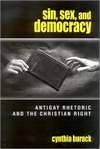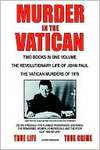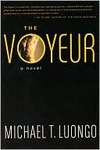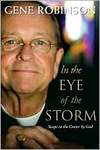 Sin, Sex and Democracy:
Sin, Sex and Democracy:
Antigay Rhetoric and the Christian Right
By Cynthia Burack, SUNY Press
ISBN: 978-0-7914-7406-8
Reviewed by Bo Young
My own personal prophet, Noel Coward opined that “We have no reliable guarantee that the afterlife will be any less exasperating than this one, have we?” Well, no. Not that I’m suggesting I found it exasperating that with a title like Sin, Sex and Democracy, I half expected to see Stephen Colbert leering from the cover, clad in some a red, white and blue leather dominatrix outfit wielding a star-spangled cat-o-nine tails. No…this is a scholarly examination of the tactics and language of the Christian Right by Cynthia Burack; she’s not kidding, and neither is the Christian Right. I have to keep reminding myself: you have to take seriously the people who take this Bible thing seriously. They (and their source material) are dangerous.
Burack, an Associate Professor of Women’s Studies at Ohio State University, makes it plain that, whatever the stripe, the rising Religious Right has one goal and one goal only: theocracy in the United States. Their theocracy. She explains how, using rhetoric, they dissemble and “strive to have their political and theological beliefs misidentified by the broad public.” The frightening thing is how far along they’ve dragged us all on this road to the perdition of their own making, how effective this tactic is.
Burack maps the triumphalist path(ology) and has put together the essential reader for anyone interested in the political implications and the maniacal agenda of the religionists. Language is important, and she has the ears to decipher and is offering us all the Religious Wingnut Decoder Ring. As she warns in her introduction, “Political discourse is a form of pedagogy, and those of us who do not appreciate the complexities of conservative Christian pedagogy will have a more impoverished understanding of American politics than those who do.” This is not theological debate. This is the unholy alliance of politics and religion met on the field of rhetoric. He who gets to the words, first, defines the word, and thereby defines the battle. Obsequious public piety crossed the lines of unseemly long ago and entered the realm of appalling. And GLBT people continue to present too tempting a target for the theocrats to pass up. There will be no Murrovian “Have you no shame?” moment in this battle. The answer is no.
Burack’s assay of the religious right is most interesting when she examines how the supposed religious movement presents itself as one thing when it is truly another. The obvious one is how they present and package themselves some “moral majority” but in fact have no claim to any measurable morality (and so long as proper public self-abasement is exhibited) like any snake oil seller, they maintain the key to their own absolution and “forgiveness”). Whatever the hypocrisy, fall in line and all is forgiven.
They present as underdogs, when they hold as much sway, now, as corporations (and with whom they are in league, of course). They cloak themselves in the sheep’s clothing of Democracy, but are hell bent on asserting a theocracy. Indeed, Burack shows that Christian conservatives “profoundly mistrust democracy, identifying liberty with license and with the satisfaction of individual interests through enslavement to selfish desires.” Which is precisely what they’d have everyone believe about Gay folk.
Professor Burack has an anthropological eye, as well as a politicians (and an ear for humor, which would seem to be indispensible when mucking around in this stuff) and discusses the La Haye’s Left Behind series and the weird world of Jack T. Chick’s comic book tracts which most of us have encountered at one point or another in some interstate highway bathroom or stuck under the windshield wiper on our car.
In the current campaign cacophony about the black Reverend Jeremiah Wright (and why has no one pointed out that he’s only living up to his biblical namesake when his speech reaches for the jeremiad heights?) when not even a sliver of the same attention is being paid to John McCain’s white Reverend Hagee and to white Pat Robertson’s blaming of all Gay people for Katrina and 9/11, it is refreshing to see Burack taking on these snake oil salesmen and holding them up to the same purifying light of day.
Burack has written a readable and fascinating appraisal and charting of our enemy within and the language they use to persuade. She asks “Do we hear what they hear? And once we listen for their vision of the good, what kind of sense can we make of it?” She makes sense of it and if you truck with these folks, you would certainly be well advised to read her assessment.
We’ll close with a reading from the prophet Noel Coward, once again: “It is discouraging how many people are shocked by honesty and how few by deceit.
Burack’s book is an honest appraisal of political deceit.
This is just an excerpt from this issue of White Crane. We are a reader-supported journaland need you to subscribe to keep this conversation going. So to read more from this wonderful issue SUBSCRIBE to White Crane. Thanks!
Bo Young is the publisher and editor of White Crane. He lives in Brooklyn, New York with his fere and two hair children.








